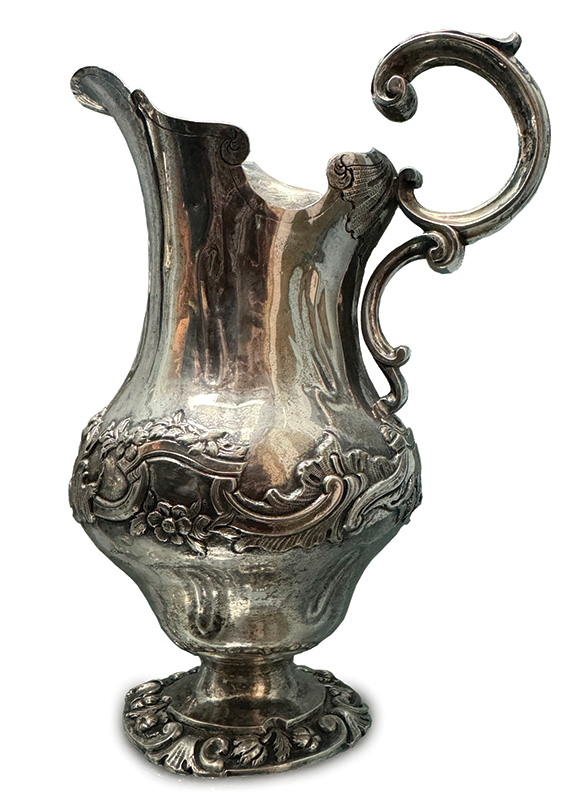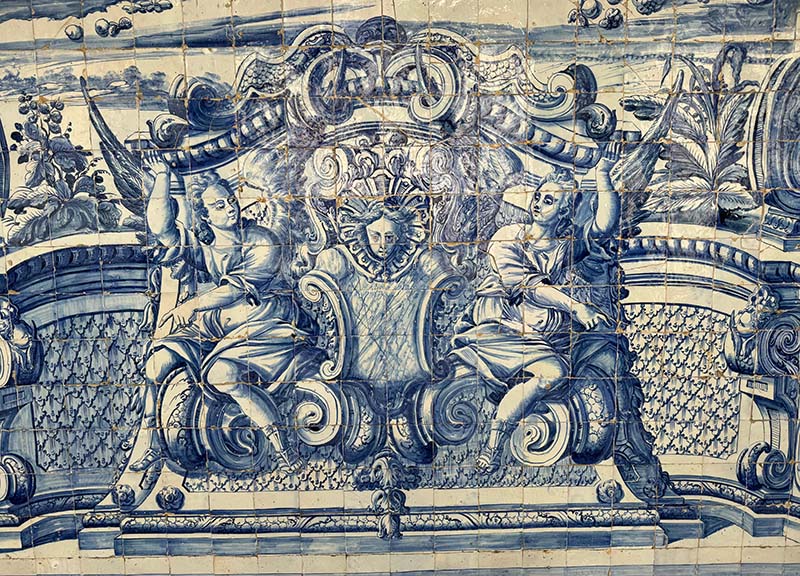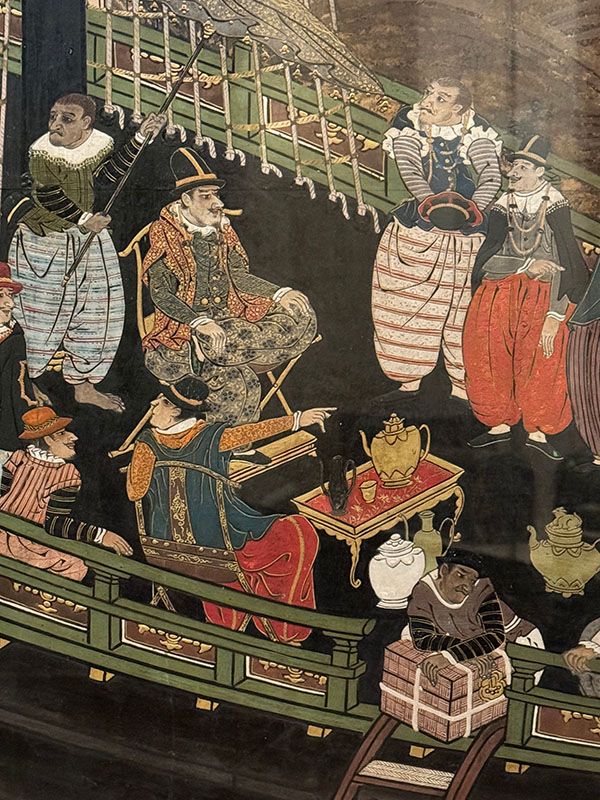A Primer on Portugal
Click on images to enlarge them and view captions.
Portugal is among the hottest destinations for American travelers at the moment, but the country’s extraordinary material culture is typically passed over in search of the no-less-admirable pursuits of gastronomy, viniculture, and seaside relaxation. Guests participating in the Decorative Arts Trust’s recent Study Trip Abroad were treated to a comprehensive and spellbinding introduction to the decorative arts that reside in an outstanding array of Portuguese museums and private collections. Our program stretched from Porto and environs in the north to Lisbon and nearby Sintra, Queluz, and Ajuda in the south, with superb objects at every turn.
Although appropriately acknowledged as a center for the production of ceramics, especially tile, an impressive range of decorative arts was on display, largely funded through colonialist exploits in Africa, Asia, and South America. Portugal’s early dominance of transpacific and transatlantic trade at the vanguard of the Age of Conquest created a direct line for the exchange of international goods (whether ceramics, spices, or the enslaved) as well as the affluence to import luxury manufactures from elsewhere in Europe. Local craft communities flourished, especially in Lisbon and Porto, where artisans made significant contributions to the country’s material culture legacy, often using materials extracted from the colonies, including exotic hardwoods and precious metals.
A tea service in the collection of the Fundação Ricardo do Espírito Santo Silva exemplifies the impact of Portuguese colonialism on the domestic manufacture of decorative arts. Consisting of a teapot, sugar bowl, and creamer (figure 1), the c. 1775 service was produced by the noted Porto craftsman João Coelho Sampaio, who rendered silver imported from the Americas with casting, chasing, and repoussé in the Rococo style. Even the handle on the teapot, carved from Brazilian rosewood, documents Portugal’s transatlantic trade. Although Portuguese silversmiths produced far more extravagant work, this service particularly resonates as a distant cousin of late-18th-century silver produced in British colonial port cities along the Atlantic coast.
The Portuguese consumption of tea and the furnishings associated with the service of the beverage were made fashionable through its long-standing connection with England, which extends back to the Crusades. The Anglo-Portuguese Treaty of 1373 established England’s oldest trading relationship. The connection was later reinforced with the 1662 marriage of Charles II to Catherine of Braganza, who is credited with spreading the popularity of tea. The involvement of British merchants in the port wine trade from the 18th century onward further bound the countries.
A parcel gilt armchair (figure 2) from the collection of the Museu Nacional de Arte Antiga (MNAA) also speaks to Portugal’s association with England and embodies the extraction of raw materials, such as gold and rosewood from Brazil. From the 17th century onward, Portuguese joiners and cabinetmakers incorporated Brazilian rosewood into their work at a prodigious rate in lieu of native chestnut and walnut. Known as a cadeira de braços, this armchair is also a truly creolized form, representing a Lisbon twist on an English form.
Azulejo, the Portuguese term for painted tin-glazed earthenware tile, is one of the iconic elements of the country’s architecture, whether civic, ecclesiastical, or domestic. The incorporation of decorative wall tile represents the confluence of long-standing ties with the Islamic world as well as Flemish artisans who came to Portugal in the mid-16th century. Although found on exterior walls and in gardens, tile was most typically used for interior ornamentation. Often installed to a height that emulates Western European wainscoting, tile could also be commissioned to cover an entire wall as a robust substitute for more fragile painting, fresco, or tapestry. Tile installations were often designed in cycles similar to other wall decoration to depict religious, historic, or mythological figures and events. Tiles were not executed solely with a palette of blue and white, and polychromatic compositions were popular at different stages. We were fortunate to see countless examples of azulejo in situ, but an active market for the salvage of historic wall tile has also allowed museums and private collectors to acquire and preserve these installations once removed. The panel of early-18th-century Baroque ornament shown here (figure 3) remains in the cloister of Porto’s cathedral and is attributed to Valentim de Almeida.
Portuguese traders were the first Europeans to reach Japan, arriving in 1543 and establishing commercial bases in Nagasaki and Kyushu in the following decades. The era of exchange that followed, referred to as the Nanban period, lasted until 1614, when Japan became isolationist. Biombos, or folding screens imported to Portugal, are among the many decorative arts testifying to this window of open trade. This segment of a screen at the MNAA (figure 4) evokes the Japanese fascination with the Portuguese merchants as well as the Jesuit missionaries that accompanied them. The remarkable detail captured by Japanese artists serves as an important document of the cultural barter that accompanied the trade of goods upon the arrival of the namban jin (the barbarians from the south, as the Portuguese were called).
Portugal offers a feast for those who appreciate the decorative arts, and the range of institutions that promote the nation’s rich history of material culture is both admirable and extensive.
Matthew A. Thurlow is the Executive Director of the Decorative Arts Trust.
A print version of this article was published in The Magazine of the Decorative Arts Trust, one of our most popular member benefits. Join today!




